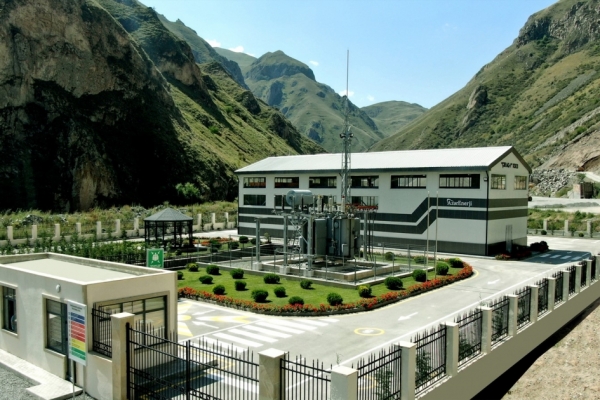Energy is one of the key sectors of the restoration work running in Karabakh and Zangazur. On May 3, 2021, President of Azerbaijan Ilham Aliyev signed an order on measures to be taken to create a green energy zone in the liberated territories. Thus, the Government will get the two tasks done. Firstly, the energy supply of Karabakh and East Zangazur will come from renewable energy sources (RES). Secondly, it will help to increase the share of renewables in the country’s energy sector from current 17% to 30% in 2030.
According to initial estimates, the solar and wind energy potential of the liberated territories makes 7.2 thousand and 2 thousand MW respectively. This is more than Azerbaijan is currently consuming domestically. Such situation enables Azerbaijan generating at least 1 thousand MW more than the domestic needs. These capacities can be exported to neighboring countries, which will yield tens of millions of dollars and thereby diversify the pattern of export and inflow of foreign exchange to the country.
In order to develop the renewable energy sector in the liberated territories, the Ministry of Energy identified 8 promising sites with a total area of 14.4 thousand hectares with the aim to construct solar power plants with a total capacity of 7.2 thousand MW (HPP) in six districts (Fuzuli, Jabrail, Zangilan, Gubadli, Lachin and Kalbajar). However, taking into account the use of some of these lands for agricultural needs, the real potential of solar power plants will be more than 4,000 MW.
The first step in this direction was BP with which the Ministry of Energy of Azerbaijan signed an executive agreement on June 4, 2021. The agreement provides for the cooperation in the field of evaluation and implementation of the project for the construction of a 240 MW solar power plant in Zangilan-Jabrayil zone. The agreement-based cooperation includes technical and commercial evaluation of the solar energy project, design of the plant, as well as provision of financing and final investment decision-making. BP’s investments into the construction of the power plant are estimated at $200 million.
Construction of the solar power plant with a capacity of 240 MW will help to generate 500 million kWh of electricity per annum and supply electricity to 100 thousand families, i.e. almost 70-80% of internally displaced people who will return to the liberated territories.
The completion of the Second Karabakh War breathed new life into the Khudaferin HPP construction project on the Araz River bordering with Iran.
In February 2016, the governments of Azerbaijan and Iran signed an agreement on cooperation in the field of continuation of construction, operation, use of energy and water resources of “Khudaferin” and “Giz Galasi” hydro junctions and hydroelectric power plants on the Araz River. The plant here will consist of two hydroelectric units with a capacity of 50 MW each.
“Giz Galasi” hydroelectric power plant, which is planned to be built on the Araz River, will consist of two hydroelectric units with the capacity of 20 MW each. The Iranian side continues the construction of the plant. By now, the operations on construction of hydrojunctions are within reach of completion. The work on “Khudaferin” hydrojunction project is 94% complete. “Giz Galasi” project is 90% complete. According to the estimates of the Ministry of Energy, “Khudaferin” and “Giz Galasi” hydrojunctions and HPP will enable Azerbaijan to generate 368 million kWh of electricity per year and provide irrigation of 260 thousand hectares of arable land. In general, the commissioning of these facilities will allow the two countries to share both electricity and water resources for irrigation.
In addition, it is planned to actively use the water resources of the liberated territories to generate electricity. For example, there is a plan to build and renovate 12 hydroelectric power plants in Kalbajar district, and five hydroelectric power plants in Lachin district, one of which has already been commissioned in Gulabird village. Thus, the generating capacity of the renovated stations in Kalbajar and Lachin districts alone will make 120 megawatts.
After Karabakh and adjacent territories were occupied by Armenia, the entire energy infrastructure existing in this region was largely destroyed or looted. There had been 20 substations in Karabakh with a total capacity of 858.6 megawatts before the war. Now, in the process of restoration it is planned to build a 308-kilometer long electricity transmission line in Fuzuli, Jabrayil, Zangilan, Gubadli, Lachin, Shusha, Agdam and Kalbajar districts, and create a single 110-kilovolt network, which will ensure reliable energy supply to the region.
The goal of all these operations is to have the whole electricity infrastructure launched on the liberated territories - both in Karabakh and East Zangazur - by the end of 2021.





